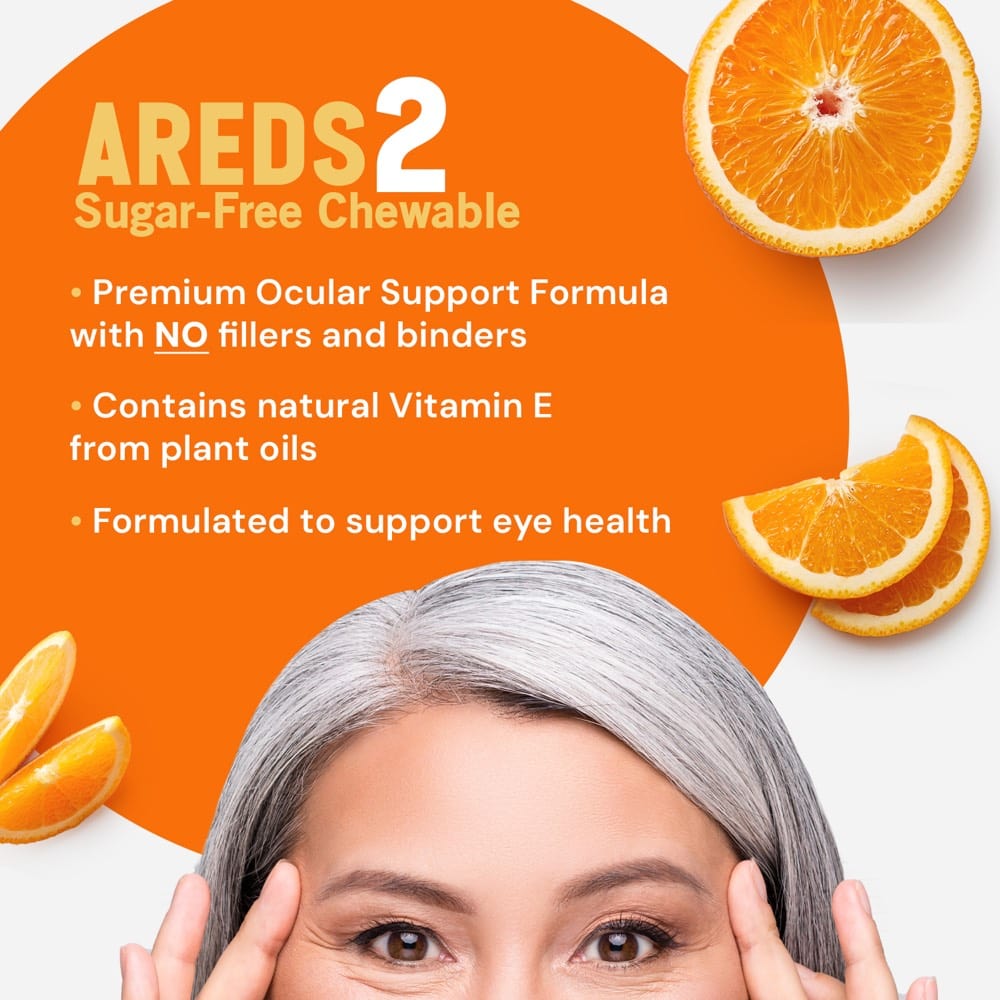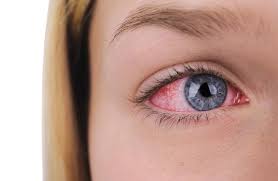Previous research showed that women have a higher risk for Age-related Macular Degeneration (AMD). Gender is a definitive risk factor for AMD, according to the National Eye Institute, with women having a higher preponderance of the disease.
Until now, there has been a failure to explain why women are more prone to AMD. And regarding prevention of AMD in women, hormone replacement therapy--though recommended by various small studies—did not have evidence to support its use for the target population.
However, a new study has unveiled why women have an increased risk for AMD, and how hormone replacement therapy reduces that risk.
According to the study, estrogen (a hormone that helps in the development and maintenance of female characteristics) becomes deficient in women after menopause, and this deficiency makes women more likely to suffer AMD. The study suggests that hormone replacement therapy in women after menopause can help cut the risk of wet macular degeneration, but what is unexpected is that this therapy also increases the risk of dry AMD in women.
The findings of this study reinforces the effectiveness of nutritional therapy for the prevention of AMD in women, because treatment with nutritional supplements is not only effective in reducing the risk of the disease, it’s also substantially safer than hormone replacement therapy.
The study: Facts and Findings…
The study, entitled Menopausal and Reproductive Factors and Risk of Age-Related Macular Degeneration, was published in the April 2008 issue of the professional journal, Archives of Ophthalmology.
Diane Feskanich and co-workers, from the Brigham and Women’s Hospital and Harvard Medical School in Boston, looked at the Nurses’ Health Study, and noted--in 74,996 postmenopausal women--certain factors related to estrogen for example, past use of oral contraceptive medicine and postmenopausal hormone replacement therapy. They noted that 554 of the women developed early or dry AMD and 334 developed more advanced or wet AMD.
The researchers found that the risk for wet or advanced AMD was 48% lower in women who received hormone replacement therapy after menopause. In women who used oral contraceptives before menopause and received hormone replacement therapy after menopause, the risk for AMD was the lowest, the researchers noted.
However, the researchers found a 34% increase in the risk of early or dry AMD in women who received hormone replacement therapy.
The study has therefore unveiled that hormone therapy in postmenopausal women reduces the risk of advanced or wet AMD, but it can also cause a substantial increase in the risk of early or dry AMD.
“The higher risk of early AMD among postmenopausal hormone users was unexpected and in apparent conflict with the observed inverse association for neovascular AMD (formation of new blood vessels; suggesting advanced or wet),” the researchers concluded in Archives of Ophthalmology.
What’s Important in this Study…
The prevalence of AMD is 1.75 million people in the United States and in 2020 it’s expected to increase to nearly 3 million.
The researchers suggested that oxidative stress plays an important role in the degeneration of the retina’s epithelium. In women, estrogen may have a protective role against the oxidative stress on retina and thus this hormone helps promote the survival of the retina’s epithelium. According to the researchers, estrogen works as a potent antioxidant, and acts against oxidative stress.
Therefore, it becomes evident from this study that after menopause in women, there is a deficiency in estrogen, and this in turn suggests that there is deficiency in antioxidants in postmenopausal women. This antioxidant deficiency increases the oxidative stress on the retina, and thus women after menopause become prone to AMD.
However, hormone (estrogen) replacement after menopause to reduce the risk of AMD may not be a safe option, because it may increase the risk of early or dry AMD.
What’s Next…
Because of the lack of estrogen (which has antioxidant properties) in women after menopause, the oxidative stress on the retina increases. Therefore, postmenopausal women are at an increased risk for AMD. Nutritional therapy of AMD in postmenopausal women using antioxidant formulas seems to be a justified option in reducing their risk of AMD, in light of the fact that hormonal therapy may actually increase the likelihood of women developing mild or dry macular degeneration.
Nutritional supplements act as scavengers of free radicals thus reducing oxidative damage to the retina.
Apart from that, other risk factors for AMD--cigarette smoking, obesity, heart disease etc—should also be addressed, because these factors play a role in reducing the risk of AMD in women.
In a recent study, cigarette smoking was found to be an independent and avoidable risk factor for AMD in women. “Because AMD is the most common cause of severe visual impairment among the elderly and treatment is not available or is ineffective for most patients, reducing the risk of this disease is another important reason to avoid smoking,” Joanne Seddon, a researcher affiliated to the Massachusetts Eye and Ear Infirmary in Boston, and co-workers wrote in the study. The study, entitled A prospective study of cigarette smoking and age-related macular degeneration in women was published in the Journal of the American Medical Association.
Nutritional Supplements: They Fight for You…
Nutrients, with their antioxidant properties, can fight against oxidative stress, thus lowering the risk of AMD in woman.
- A study by US researchers suggests that diets rich in lutein and zeaxanthin, two nutrients with strong antioxidant properties, can help prevent intermediate AMD in women less than 75 years old. The study, entitled Associations Between Intermediate Age-Related Macular Degeneration and Lutein and Zeaxanthin in the Carotenoids in Age-Related Eye Disease Study (CAREDS), has been published in Archives of Ophthalmology. In this study, Suzen M. Moeller, a researcher affiliated to the University of Wisconsin in Madison, and co-workers studied women between the ages of 50 and 79 who had a stable intake of lutein and zeaxanthin in their diets. The researchers found that in women younger than 75 years and without any history of chronic diseases, a stable dietary intake of lutein and zeaxanthin could substantially cut the risk of AMD. Carrots, squash, peaches, papaya, broccoli, spinach and peas are some of the dietary sources for lutein and zeaxanthin. These two nutrients account for 80% of the carotenoid (organic pigments which absorb light; important for central vision) content in the retina, and protect the eyes against AMD by reducing oxidative stress in the retina. Lutein and zeaxanthin also act by absorbing harmful blue light.
- A study published in the American Journal of Clinical Nutrition suggests that consuming smaller amounts of refined carbohydrate in diet can substantially benefit persons who are at risk of advanced AMD. The study, entitled Dietary carbohydrate and the progression of age-related macular degeneration: a prospective study from the Age-Related Eye Disease Study, involved 3977 participants aged 55-80 years; 58% of the participants were women. In the study, Chung-Jung Chiu and co-workers from Tufts University in Boston suggested that approximately 7.8% of the advanced AMD cases could be prevented if the participants could consume low-carbohydrate diets.
- Another study suggests that dietary supplementation with beta carotene, vitamins C and E, and zinc can substantially reduce the risk of AMD in elderly men and women. The study, entitled Dietary Intake of Antioxidants and Risk of Age-Related Macular Degeneration, has been published in Journal of the American Medical Association. The study looked at 5836 persons, who were at the risk of AMD, and found that high dietary intake of beta carotene, vitamin C, vitamin E, and zinc could reduce the risk of AMD in the study population by 35%.
AMD in Women: What’s different…
- According to a study published in Journal of the American Geriatrics Society, older women with AMD have an increased risk for falls, compared to their healthy counterparts. The study, entitled Older Women with Age-Related Macular Degeneration Have a Greater Risk of Falls: A Physiological Profile Assessment Study, was conducted by Shelagh M. Szabo and co-workers at the University of British Columbia in Vancouver, Canada. The researchers evaluated the risk of falls in 115 women aged 70 years and more and found that older women with AMD were more likely to experience falls, compared to women without the disease. “Older women with AMD have impaired balance, slow visual reaction times, and poor vision, which in combination result in a significantly greater risk of falls than population norms,” wrote the researchers in the journal.
- Healthy lungs may confer some protective effects regarding the progression of AMD in women, suggests a study that has been published recently in Archives of Ophthalmology. In the study, entitled Pulmonary Disease and Age-Related Macular Degeneration, the researchers looked at 4926 individuals aged 43-86 years, and suggested a link between AMD in women and lung diseases. “Independent of smoking, a history of emphysema and respiratory symptoms and function are modestly but inconsistently associated with the incidence and progression of AMD,” the researchers concluded in the journal.














